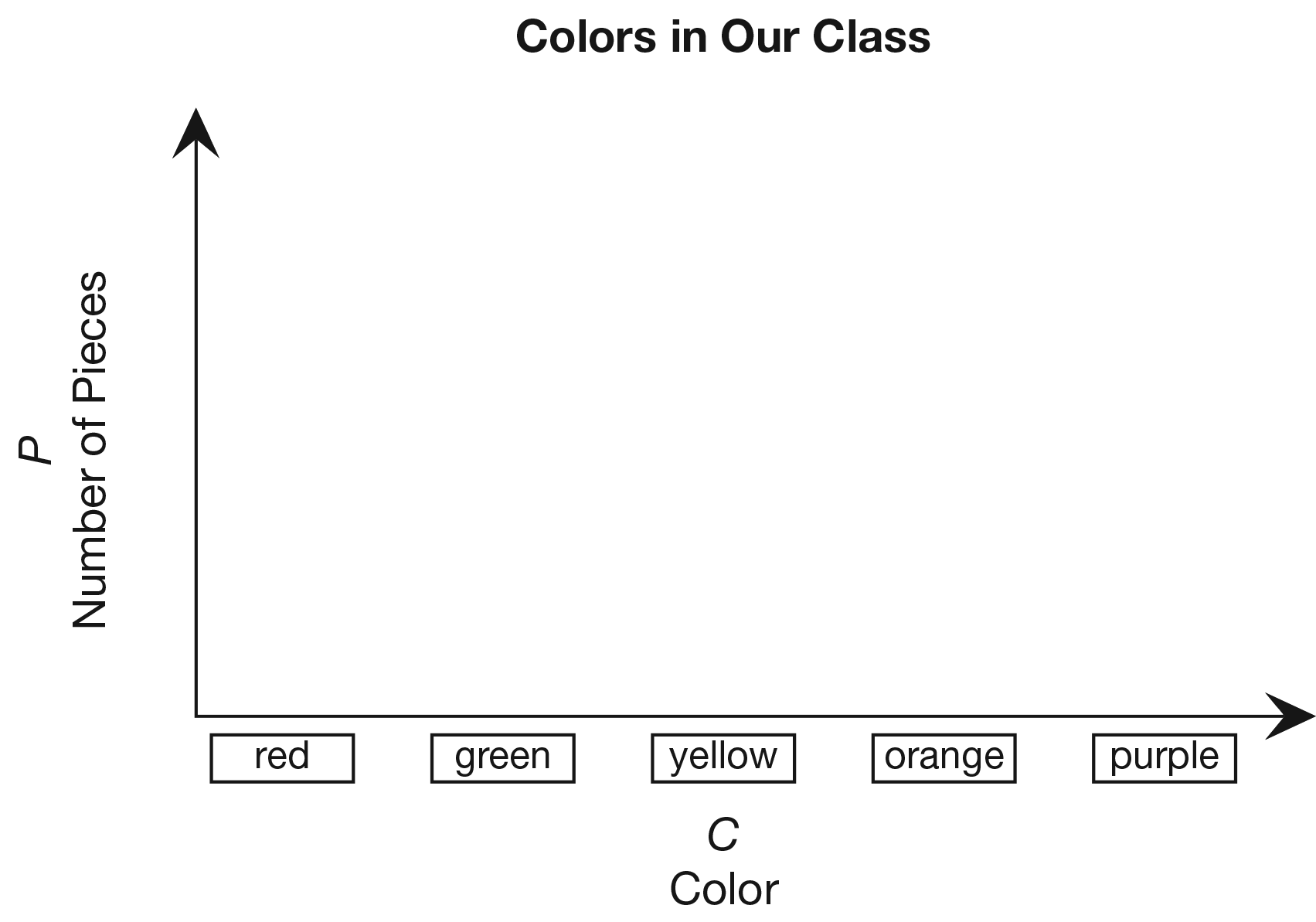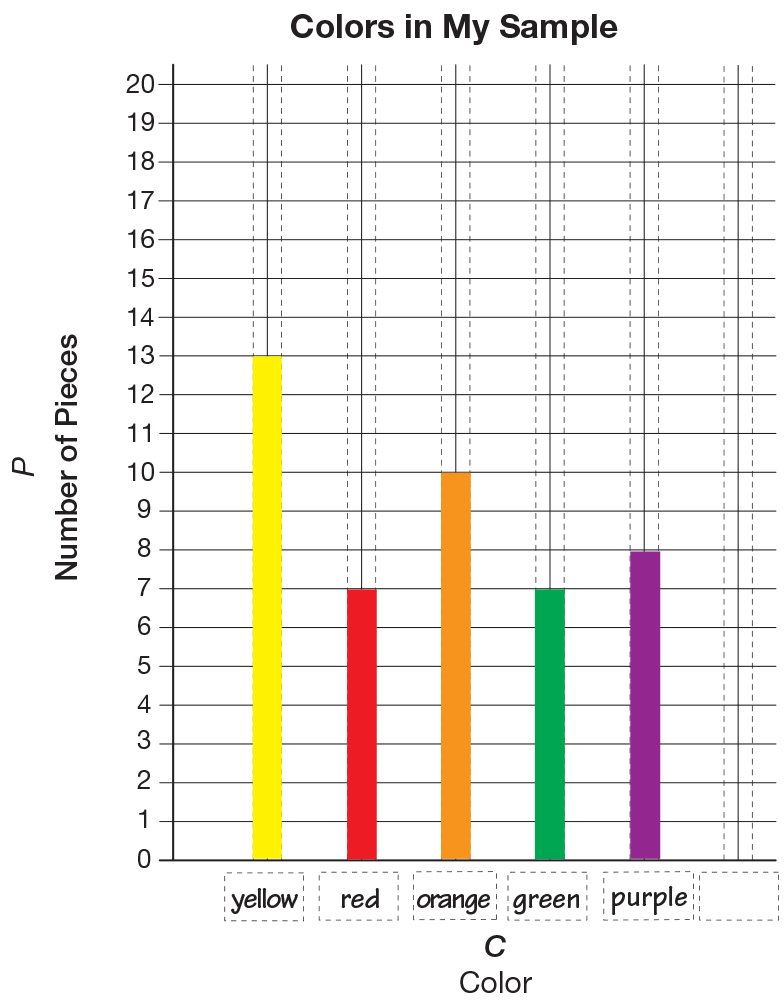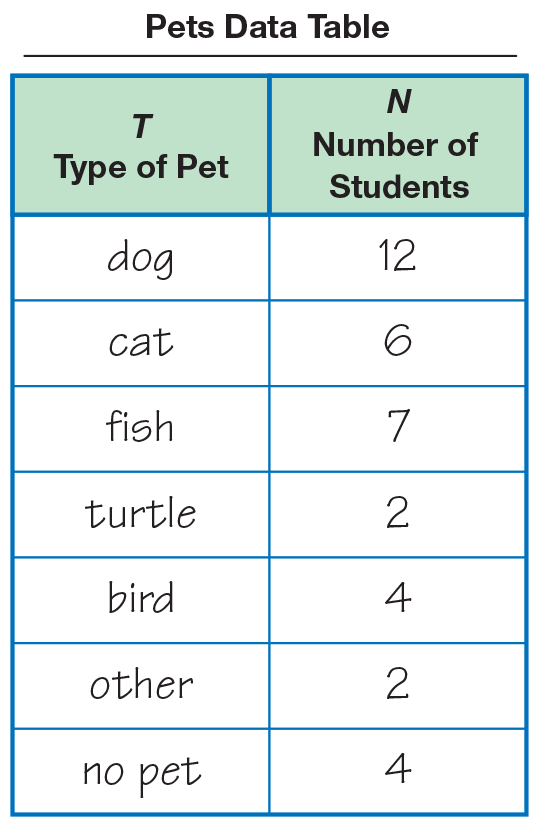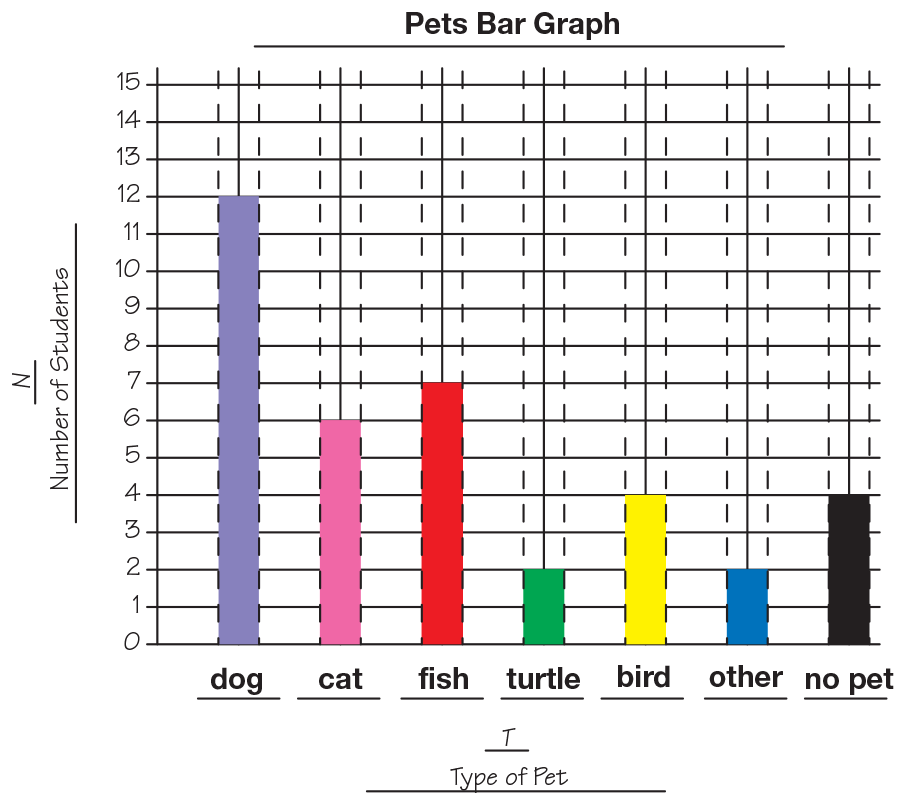Students investigate the color distribution in multicolored cereal while grouping and counting by fives and tens. This provides an introduction to sorting and sampling. The TIMS Laboratory Method, a four-step adaptation of the scientific method, is also introduced.
Content in this Lesson
- Connecting mathematics and real-world events: sampling a population and investigating colors in cereal.
- Grouping and counting objects by twos, fives, and tens [E1].
- Collecting and organizing information in a data table [E8].
- Making a bar graph to find information about the colors in a sample [E9].
- Solving addition problems using data represented in a bar graph and a
table [E7]. - Reading a table or bar graph to find information about a data set [E10].
- Making predictions and generalizations about the colors in cereal using a data table and bar graph [E11].
- Connecting representations of quantities
(e.g., ten frames, data tables, graphs) [E5]. - Finding good strategies and tools to solve addition problems [MPE2].
- Communicating solution strategies [MPE5].
Daily Practice and Problems O–T
Assessment in this Lesson
| ASSESSMENT | EXPECTATION ASSESSED | MATH PRACTICES EXPECTATION ASSESSED |
|---|---|---|
|
Colors Lab Data Table Student Activity Book Page 110 |
|
|
|
Colors Lab Bar Graph Student Activity Book Page 111 |
|
|
|
Colors Lab Questions 1–5 with Feedback Box Student Activity Book Pages 113–114 |
|
|
|
DPP Item O Sharing Stickers Teacher Guide - digital |
|
|
|
DPP Item R More of Grandma’s Cookies Teacher Guide - digital |
|
|
|
DPP Item T Spoonful of Cereal Teacher Guide - digital |
|


















